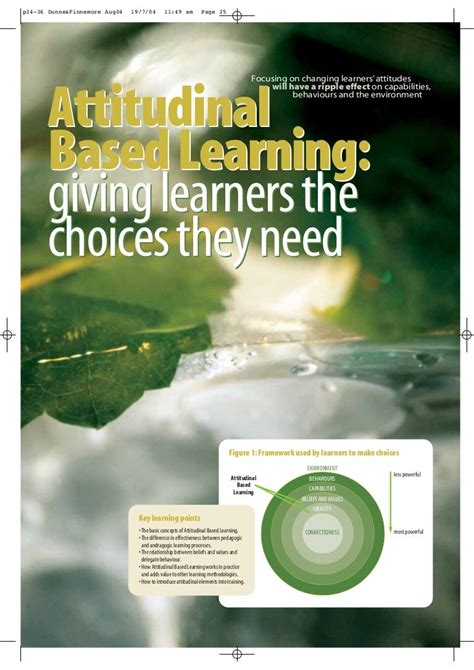Gamification in education is revolutionizing the way we approach teaching and learning. By integrating game-like elements into educational environments, educators can enhance student engagement, motivation, and overall learning outcomes. This comprehensive guide explores the concept of gamification, highlighting its benefits and providing practical steps for effective implementation. From defining learning objectives to selecting suitable game mechanics, designing challenges, and utilizing technology, we will delve into each aspect of gamification in education. Whether you’re a teacher, instructional designer, or educational technologist, this guide will equip you with the knowledge to create a dynamic and interactive learning experience that fosters student success.
Let’s investigate this topic extensively with electrapk.com
1. Understanding the Concept of Gamification
Gamification refers to the use of game design elements in non-game contexts to enhance engagement and motivation. In education, this involves incorporating aspects such as point systems, badges, leaderboards, and challenges into the learning process. The goal is to make learning more interactive and enjoyable, thereby increasing student participation and commitment.
At its core, gamification leverages the natural human affinity for games, which are often designed to be engaging, rewarding, and competitive. By integrating these elements into educational activities, educators can tap into students’ intrinsic motivation. This approach not only makes learning more appealing but also encourages students to take ownership of their educational journey.
Understanding gamification involves recognizing its potential to transform traditional teaching methods. It is not about turning education into a game but rather using game mechanics to enhance educational experiences. This can lead to more dynamic classroom environments, where students are more eager to participate, collaborate, and achieve their learning goals.

2. Benefits of Gamification in Education
Gamification offers several compelling benefits in education, significantly enhancing the learning experience for both students and educators. One of the primary advantages is increased student engagement. By incorporating game elements such as rewards, challenges, and competition, students are more likely to participate actively and maintain interest in their studies. This heightened engagement can lead to improved motivation and a greater desire to achieve learning objectives.
Another benefit is the enhancement of motivation through intrinsic and extrinsic rewards. Gamification taps into students’ natural desire for achievement and recognition, providing immediate feedback and rewards that can drive continuous effort and persistence. This creates a more rewarding learning environment where students are motivated to excel.
Gamification also promotes a more personalized learning experience. Game mechanics can be tailored to address individual learning styles and needs, offering diverse pathways and options for students to explore. Additionally, it encourages collaboration and teamwork, as many gamified activities involve group challenges and interactions, fostering a sense of community and shared goals.
Furthermore, gamification can improve retention and understanding of complex concepts. The interactive and immersive nature of game-based learning helps students grasp and remember information more effectively. Overall, gamification in education creates a more engaging, motivating, and personalized learning envi

3. Identifying Learning Objectives and Outcomes
Identifying clear learning objectives and outcomes is crucial when implementing gamification in education. Begin by defining what students should know, do, or feel by the end of the lesson or course. These objectives should be specific, measurable, achievable, relevant, and time-bound (SMART).
Next, align these objectives with appropriate game mechanics that support the desired outcomes. For example, if the goal is to enhance problem-solving skills, design challenges that require critical thinking and strategy. If the focus is on knowledge retention, incorporate quizzes or trivia games that reinforce key concepts.
Ensure that the game elements are directly linked to the learning goals, providing a seamless integration of educational content and gameplay. By setting clear objectives and outcomes, you can create a structured gamified experience that effectively drives student achievement and allows for accurate assessment of their progress.

4. Choosing Appropriate Game Mechanics and Elements
Selecting appropriate game mechanics and elements is essential for the successful integration of gamification in education. Start by choosing game mechanics that align with your learning objectives. Common mechanics include point systems, badges, leaderboards, and levels. Points can be awarded for completing tasks or achieving milestones, while badges serve as visual symbols of accomplishment. Leaderboards introduce a competitive element, and levels provide a sense of progression and achievement.
Incorporate game elements that enhance engagement and motivation. For example, use challenges and quests to create a sense of adventure and purpose. Incorporate interactive simulations or role-playing scenarios to immerse students in real-world applications of their knowledge.
Consider the diversity of your students and their preferences when selecting game mechanics. Tailor elements to different learning styles, ensuring inclusivity and broad appeal. Additionally, ensure that the game mechanics are balanced and do not overshadow the educational content. By thoughtfully choosing and integrating game mechanics, you can create a s
5. Designing Engaging and Relevant Challenges
Designing engaging and relevant challenges is key to the effectiveness of gamification in education. Start by ensuring that the challenges align closely with your learning objectives. Each challenge should be directly related to the content being taught and should reinforce the key concepts you want students to master.
Craft challenges that are varied and cater to different learning styles. For example, include problem-solving tasks, creative projects, and interactive simulations. This diversity keeps students interested and caters to their individual strengths. Challenges should be appropriately difficult—challenging enough to be motivating but not so difficult that they become frustrating. Incorporate different levels of difficulty to accommodate varying skill levels and allow for progression.
Make the challenges contextually relevant and relatable to students’ interests and real-world applications. This relevance enhances engagement and helps students see the practical value of what they are learning. Provide clear instructions and feedback to guide students through the challenges, and incorporate elements of choice and autonomy to increase their sense of ownership and investment.
By designing engaging and relevant challenges, you create
6. Integrating Technology and Tools for Gamification
Integrating technology and tools is crucial for the successful implementation of gamification in education. Start by selecting platforms and software that support the gamified elements you wish to incorporate. Learning management systems (LMS) with gamification features, such as badges and leaderboards, can streamline the integration process. Tools like Kahoot! or Quizizz can be used to create interactive quizzes and games that reinforce learning objectives.
Utilize educational apps and platforms that offer gamified learning experiences, such as Duolingo for language learning or Prodigy Math for math skills. These tools provide engaging, interactive content and real-time feedback, enhancing the gamification experience.
Incorporate virtual and augmented reality tools to create immersive learning environments. VR and AR can simulate real-world scenarios and complex concepts, making learning more interactive and engaging.
Ensure that the technology you choose is user-friendly and accessible to all students. Provide training and support to help students and educators effectively use these tools. By integrating the right technology and tools, you can enhance the gamification of your educational content, making learning more interactive, engaging, and effective.
7. Assessing Student Progress and Providing Feedback
Assessing student progress and providing feedback are integral to the effectiveness of gamification in education. Start by incorporating assessment mechanisms that align with the gamified elements you’ve implemented. Utilize quizzes, polls, and progress trackers to measure student performance and understanding in real-time. Many gamified platforms offer built-in analytics tools that can help track students’ achievements, participation levels, and areas needing improvement.
Feedback should be timely, constructive, and specific. Provide immediate responses to students’ actions, celebrating their successes and offering guidance on how to improve. This can be done through automated feedback in digital platforms or personalized comments during class.
Incorporate regular reflection opportunities where students can assess their own progress and set personal goals. This self-assessment encourages students to take ownership of their learning and understand their strengths and areas for growth.
Additionally, consider peer feedback opportunities, allowing students to give and receive constructive critiques from their classmates. This can enhance learning through collaborative evaluation and diverse perspectives. By effectively assessing p
8. Best Practices and Tips for Successful Implementation
To ensure successful implementation of gamification in education, adhere to the following best practices. First, align gamification elements with clear learning objectives. This ensures that game mechanics directly support educational goals and enhance the learning experience.
Second, start small and scale gradually. Begin with a few gamified elements and expand as you gauge their effectiveness and gather student feedback. This approach allows for adjustments and refinements based on initial outcomes.
Third, involve students in the design process. Gather their input on game mechanics and challenges to ensure the gamified elements resonate with their interests and motivations.
Fourth, ensure that technology used is user-friendly and accessible to all students. Provide training and support to both educators and students to maximize the benefits of the tools and platforms.
Fifth, balance fun with educational value. While game elements should be engaging, they should not overshadow the core learning objectives.
Lastly, regularly evaluate and adjust your gamification strategy based on feedback and assessment data. Continuous improvement ensures that the gamified approach remains effective and relevant to student needs. By following these practices, you can create a dynamic and impactful learning environment through gamification.
Gamification in education offers a powerful way to enhance engagement, motivation, and learning outcomes. By understanding the concept, leveraging appropriate game mechanics, and integrating technology effectively, educators can create dynamic and interactive learning experiences. Continuous assessment and feedback, coupled with best practices, ensure that gamification remains a valuable tool in achieving educational success and fostering student growth.
electrapk.com
